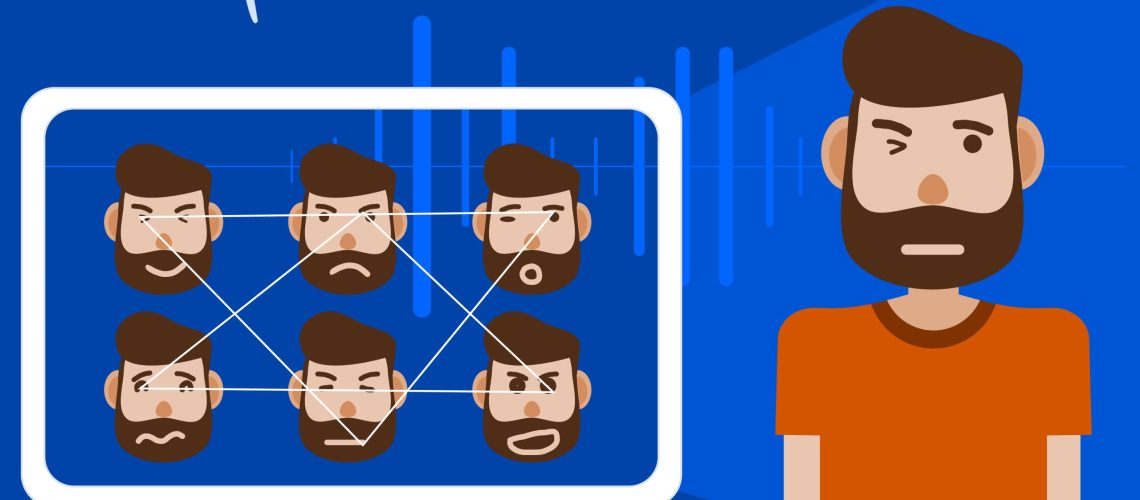Deepfakes are a type of artificial intelligence-based technology that allows for the creation of highly realistic digital forgeries, in which an individual’s face and/or voice is replaced with someone else’s. This technology can be used to create convincing videos of real people doing or saying things they never did. Deepfakes are a growing concern because they can be used to spread misinformation and propaganda, and to harass or blackmail individuals. Other Deep Fake applications include, Political Propaganda, Blackmail, Pornography, Politics, Art, Acting, Advertisements, Entertainment, Online Memes and Social Media.
Social Media and Gov’t Role in Deep Fakes :
Social media users could use a face-generating artificial intelligence system to hide their identity in other people’s photos. Few social media sites, like Facebook and Instagram, let users decide whether they are tagged in photos. Other areas of focus should be on (a) commercialising fact-checking as a service. (b) create regulatory. (c) create structured fact-checking data through Claim Review. (d) regionally collaborate.
Social Engineering Crimes using Deep Fakes :
Deepfakes can be used as a tool in social engineering crimes, in which attackers use manipulation and deception to trick individuals into divulging sensitive information or performing certain actions.
- One example of how deepfakes can be used in social engineering is by creating a video of a high-level executive or official, such as a CEO or government official, asking for sensitive information or requesting a transfer of funds. This video can then be sent to an employee or other individual who may not be able to tell that the video is fake, and may comply with the request.
- Another example is creating a fake video of a friend or family member asking for money or other financial help.
- Deepfakes can also be used in impersonation attacks, in which an attacker creates a fake video or audio of an individual, such as a celebrity or public figure, and uses it to impersonate that person and gain access to sensitive information or resources.
It is important to be aware of these threats and take steps to protect yourself and your organisation from deepfake-based social engineering attacks. This includes being sceptical of unexpected requests for information or money, verifying the identity of the person making the request, and reporting suspicious activity to the appropriate authorities.
Fact Checking Deep Fakes:
Social media users could use a face-generating artificial intelligence system to hide their identity in other people’s photos. Few social media sites, like Facebook and Instagram, let users decide whether they are tagged in photos. Other areas of focus should be on (a) commercialising fact-checking as a service. (b) create regulatory. (c) create structured fact-checking data through Claim Review. (d) regionally collaborate.
Fact Checking Deep Fakes :
Fact-checking deepfakes can be challenging, as the technology used to create them is constantly evolving and becoming more sophisticated. However, there are several steps that can be taken to help verify the authenticity of a video:
- Check the source: Look for information about the video’s origin and try to verify that the source is reputable and credible.
- Check other sources: Look for other sources that report on the same video or story, and compare the information to see if it matches up.
- Look for inconsistencies: Check for any inconsistencies or errors in the video, such as unnatural movements or expressions, mismatched audio, or inconsistencies in the lighting or shadows.
- Use specialised tools: There are tools available that can analyse videos and detect signs of manipulation, such as the “Deepfake Detection Model” which is a specialised software that can detect deepfakes.
- Check the context: Consider the context of the video and the circumstances under which it was created. Is it plausible that the events in the video could have occurred?
- Verify with the person: If the video features a specific person, try to reach out to that person and verify the authenticity of the video.
- Log on to https://factly.in/ or https://www.boomlive.in/ or https://www.altnews.in/ or any other official International Fact Checking Network Members to validate about Deep Fakes.
Spotting Deep Fakes :
- Look for unnatural movements or expressions: Deepfakes often struggle to perfectly replicate the subtle movements and expressions of real people, so look for unnatural or exaggerated movements in the video.
- Check the audio: Deepfakes may not perfectly match the audio with the video, so listen for any inconsistencies or errors in the audio.
- Check the lighting and shadows: Deepfakes may not accurately replicate the lighting and shadows in a scene, so look for inconsistencies or errors in these elements.
- Check the background: In a deepfake video, the background may be out of focus, or not match the movement of the subject.
- Check the metadata: Some deepfake videos may have metadata that indicates that the video is a deepfake or has been manipulated.
- Pay attention to blinking, check if the person blinking enough or too much.
- Ask the person to way the hand while while talking.
- Ask the person to move the position of the face while talking.
- Use specialised software: There are software like “Deepfake detection model” which helps to detect deepfakes.
Conclusion :
Deepfake technology is constantly evolving, and it is becoming more difficult to spot deepfakes. Therefore, it is essential to remain sceptical and verify the authenticity of any video or image or a document before accepting it as true.



